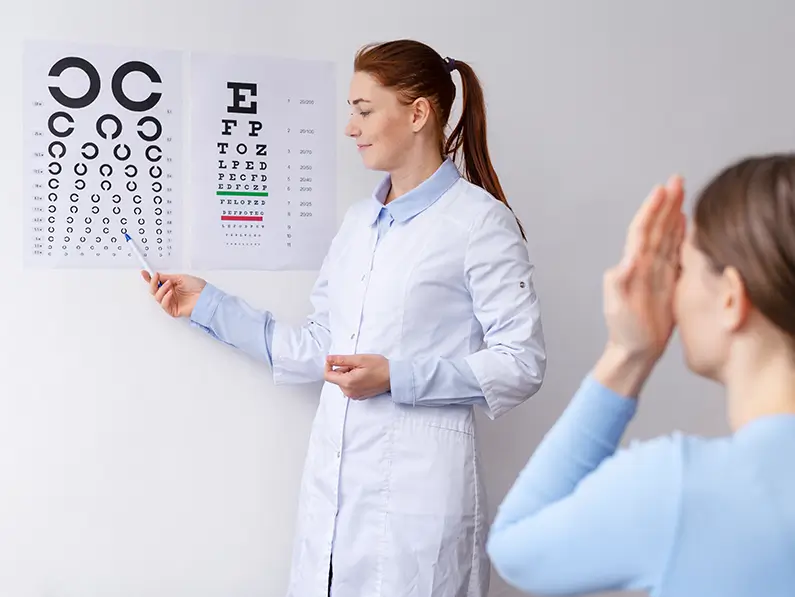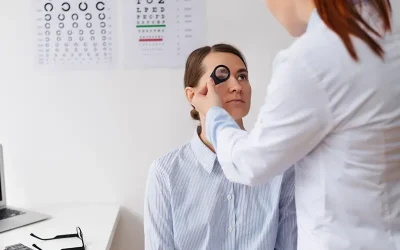Have you ever wondered if you’re due for an eye exam? With our busy lives, it’s easy to overlook routine appointments—even those that play a crucial role in our overall wellbeing. Experts recommend scheduling your next comprehensive eye exam every 2 years, or yearly if you’re over 65, and sooner if you notice any vision changes. In this article, we’ll break down the optimal times to schedule your exam, explore how different life stages and lifestyles impact your vision care, and explain what you can expect during your visit. Whether you’re a parent, a busy professional, or enjoying your retirement years, this guide is designed to help you take charge of your eye health.
Understanding the Importance of Regular Eye Exams
Regular eye exams are more than just a routine check, they’re a window into your overall health. Our eyes can often reveal signs of underlying conditions such as diabetes, high blood pressure, or even neurological issues. By staying on top of your vision care, you’re not only protecting your sight but also potentially catching other health concerns early. Remember, early detection is key, and an exam today can help avoid complications tomorrow.
Age-Specific Recommendations for Eye Exams
When it comes to eye care, one size doesn’t fit all. Different stages of life call for different exam frequencies. Let’s break it down:
Children and Adolescents
For our little ones and teenagers, early eye exams are essential. Kids should have their first comprehensive eye exam at around six months of age, followed by another at age three, and then once more before starting school. As children grow and engage more with digital devices, periodic check-ups become even more crucial. Early detection of vision problems in children can prevent learning difficulties and support better academic performance. Parents, keep an eye (pun intended) on any signs of trouble such as squinting or sitting too close to screens.
Adults and Middle Age
As we move into adulthood, our vision can change. It is generally recommended that adults without any symptoms or risk factors have a comprehensive eye exam every two years. However, if you have a family history of eye disease or wear corrective lenses, you might need more frequent visits. Adults in this stage of life should also be aware of the impact that prolonged screen time can have on their eyes. If you notice frequent headaches, blurred vision, or eye strain, it might be time to schedule an exam sooner rather than later.
Seniors and the Elderly
Seniors are at an increased risk for eye conditions such as glaucoma, cataracts, and age-related macular degeneration. For those over 65, yearly eye exams are often recommended. These regular check-ups can catch potential issues before they lead to severe vision impairment. Seniors should also pay attention to any sudden changes in vision and report these immediately to their eye care professional.
Recognizing When Your Eye Exam is Overdue
Even if you follow a regular schedule, certain signs may indicate that your next comprehensive eye exam is overdue.
Common Signs of Vision Problems
Do you find yourself frequently rubbing your eyes, experiencing headaches, or having difficulty reading? These symptoms might seem trivial, but they could be red flags signaling that your eyes need a closer look. Other warning signs include:
- Blurry or double vision
- Sudden flashes of light
- Difficulty adjusting to changes in light
- Persistent eye discomfort or redness
It’s important to note that these signs can develop gradually. If you’re noticing any changes in your vision, don’t wait—schedule that exam!
Risk Factors and Lifestyle Considerations
Your lifestyle can also influence how often you should get an eye exam. For instance, if you work long hours in front of a computer or are an avid gamer, your eyes might be under extra strain. Similarly, individuals with diabetes or a family history of eye diseases should consider more frequent check-ups. Even habits like smoking can increase the risk of developing eye problems. Ask yourself: Are my daily habits affecting my eyes more than I realize? A proactive approach can make all the difference.
What to Expect During a Comprehensive Eye Exam
If you’re wondering what happens during a comprehensive eye exam, here’s a rundown of the process:
Preliminary Testing and Patient History
Before the actual exam begins, your eye doctor will usually start by taking a detailed history. They’ll ask about your overall health, any existing medical conditions, and your family’s eye health history. This background information helps them tailor the exam to your specific needs. Additionally, you might fill out a questionnaire that outlines any symptoms or changes you’ve noticed in your vision.
Detailed Eye Health Assessment
After the preliminary steps, your eye doctor will perform a series of tests to assess the health of your eyes thoroughly. This part of the exam is where technology meets personalized care.
Vision Testing and Imaging
- Visual Acuity Test: This is the classic eye chart test, where you read letters from a distance to gauge your clarity of vision.
- Refraction Assessment: This test determines the proper prescription for glasses or contact lenses if needed.
- Intraocular Pressure Test: Used to screen for glaucoma, this test measures the pressure inside your eyes.
- Retinal Imaging: Advanced imaging techniques allow your doctor to examine the retina closely, identifying early signs of conditions like macular degeneration or diabetic retinopathy.
Each of these steps plays a crucial role in forming a complete picture of your eye health. The use of state-of-the-art technology ensures that even subtle issues can be detected early.
Insurance, Cost, and Scheduling Considerations
Managing eye care shouldn’t break the bank, and understanding your insurance options can help you make informed decisions.
Navigating Insurance Coverage
Many insurance plans cover routine eye exams, but the details can vary widely. It’s important to review your policy or speak with your provider to understand what’s included. Some plans offer annual exams while others might cover them every two years. If you’re unsure, a quick call to your insurance company can clarify what your benefits are. Don’t forget to ask about any copays or deductibles associated with eye care services.
Cost-Effective Tips for Eye Exams
Even if your insurance covers most of the costs, you might be interested in some budget-friendly tips:
- Shop Around: Compare prices between local clinics and larger chains.
- Look for Promotions: Some eye care centers offer seasonal discounts or package deals for families.
- Utilize Vision Savings Plans: If you don’t have comprehensive coverage, consider a vision savings plan that can reduce out-of-pocket expenses.
By being proactive about your eye care and costs, you can ensure that nothing stands between you and clear, healthy vision.
The Preventive Benefits of Regular Eye Check-Ups
Regular eye exams offer more than just updated prescriptions. They serve as a critical tool for preventive health care.
Imagine your eyes as the windows to your overall health. Regular check-ups can detect early signs of systemic conditions such as diabetes and high blood pressure, sometimes even before other symptoms appear. By catching issues early, you can embark on timely treatments that might prevent further complications. Moreover, consistent monitoring of your eye health can help maintain the quality of life you enjoy—clear vision means a safer drive, better work performance, and more enjoyable leisure activities.
Preventive care isn’t just about avoiding problems; it’s about embracing a healthier lifestyle. By integrating regular eye exams into your annual health routine, you’re taking a small yet significant step toward long-term wellness.
Conclusion and Final Thoughts
In conclusion, scheduling your next comprehensive eye exam should not be left to chance. Whether you’re a parent ensuring your child’s vision is on track, an adult noticing early signs of eye strain, or a senior keeping a vigilant eye on potential age-related issues, regular exams are a cornerstone of overall health. Early detection through a comprehensive exam can save your vision—and potentially your life—by catching issues before they escalate.
By understanding the frequency needed for different age groups, recognizing the warning signs, and knowing what to expect during your exam, you can approach your eye care with confidence. With proper insurance guidance and cost-effective strategies, keeping up with your eye health has never been easier. So, ask yourself today: When was your last eye exam? If it’s been too long, consider scheduling one soon. After all, your eyes deserve the best care possible, and you deserve the peace of mind that comes with clear, healthy vision.
FAQ: Your questions answered
How often should I have my eyes checked if I have no symptoms?
If you’re in good health and have no risk factors, a comprehensive exam every two years is generally recommended. However, if you have a family history of eye diseases or work extensively with digital screens, you might need more frequent exams.
What are some early signs that indicate I might need an eye exam?
Common signs include frequent headaches, blurred or double vision, eye strain, and difficulty adjusting to changes in lighting. If you notice any of these, it’s wise to schedule an appointment.
Are comprehensive eye exams covered by insurance?
Many insurance plans do cover routine eye exams, though the frequency and extent of coverage can vary. It’s best to review your policy or contact your provider to understand your benefits.
What happens during the imaging part of an eye exam?
During retinal imaging, advanced equipment is used to capture detailed pictures of the back of your eye. This helps in detecting early signs of conditions like glaucoma, macular degeneration, or diabetic retinopathy.
Can lifestyle changes really affect my eye health?
Absolutely. Factors such as prolonged screen time, poor nutrition, and smoking can negatively impact your eyes. Regular check-ups help in monitoring these effects and can guide you in making healthier choices to protect your vision.


